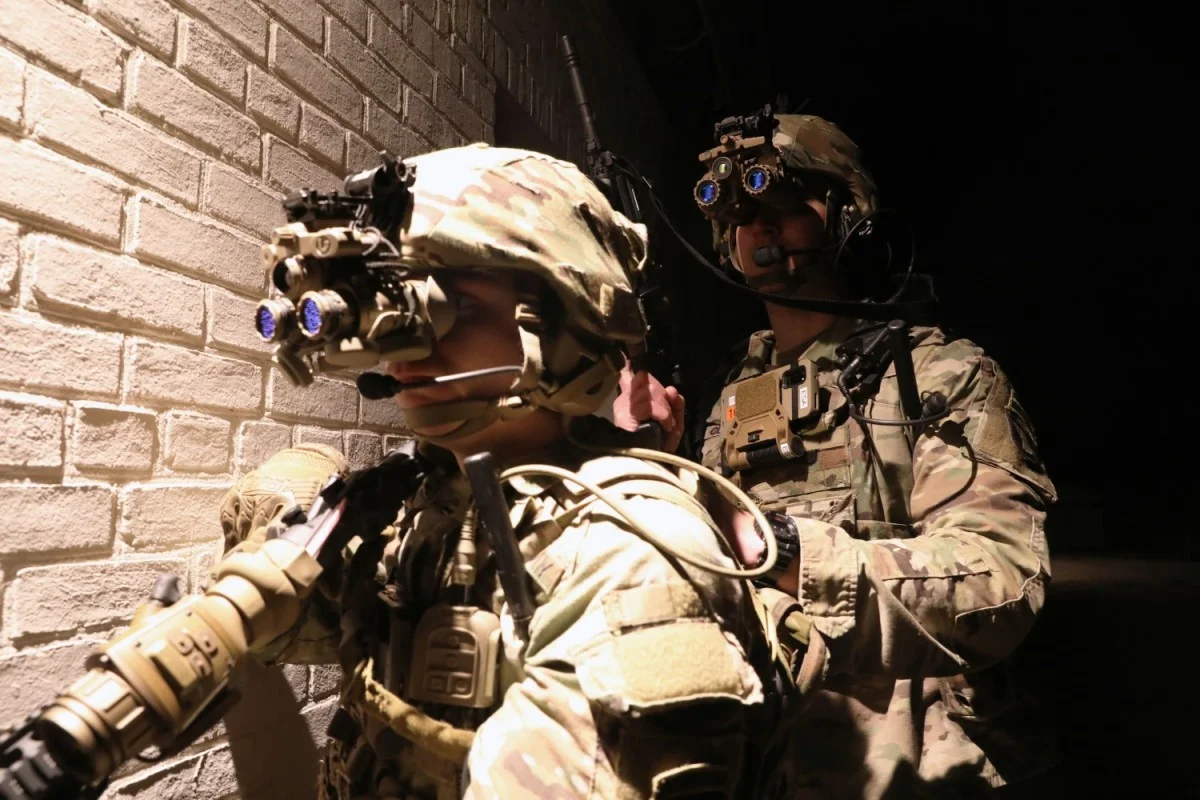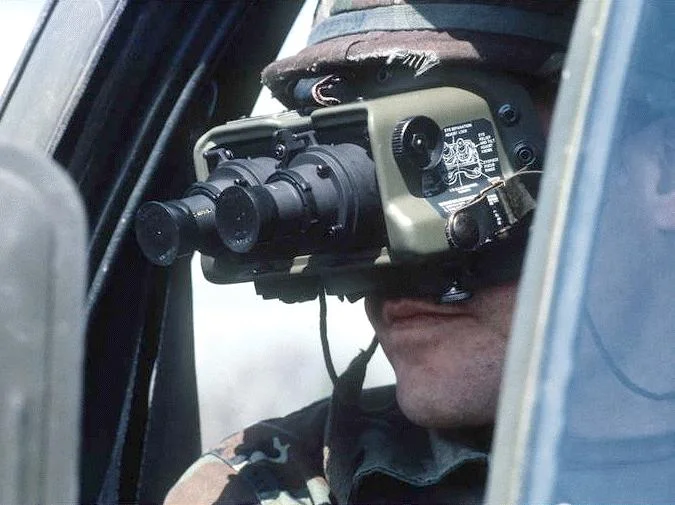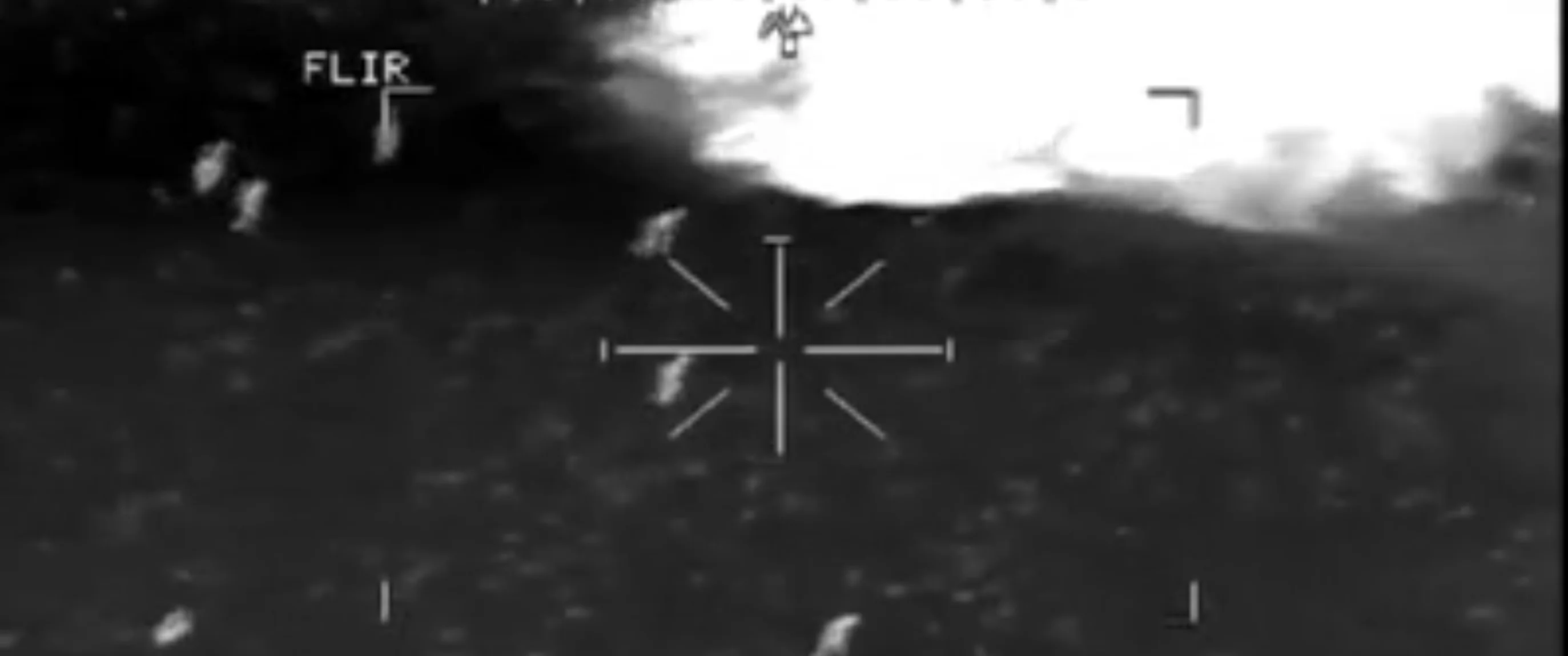History of NVG, Part Deux! - 5/26/2025
The History of Night Vision, Part Deux! Lenses, Lies, and Laser Beams!

Let’s rewind to the 1970s. A glorious time when bell-bottoms were a real fashion choice, cars with giant birds on their hoods roamed the streets, and the U.S. and USSR were in a passive-aggressive slap fight to control the world. America lost its first war, the French switched from learning German to Russian, the space program was effectively cancelled, and the distant sound of taxpayer money catching fire made mainstream Americans question if their government even knew what it was doing.
In the middle of this high-stakes flex-a-thon, two big things happened:
- Night vision got better.
- Mustaches got thicker.
Thanks for reading Night Vision & Tech by Adams! Subscribe for free to receive new posts and support my work.Subscribed
Generation 2: Smaller Tubes, Bigger Attitude
Meet the microchannel plate—the electron-multiplying disc of doom that turned Gen 1’s potato-cam into Gen 2’s semi-respectable optic. It amplified light ~20,000× and made starlight look like a freaking rave. Also cut the size down, so now your face-mounted optic only made you look mildly cyborg, not full Gundam.

This gave birth to the legendary AN/PVS-5. It was head mounted (well, actually, more like FACE MOUNTED) and somewhat functional. Yes, it looked like someone taped a toaster oven to your face and the plastic box that mounted it to you practically came from the factory pre-broken. But guess what? You could now do hoodrat stuff hands-free at night. Revolutionary.
“But I need White Phosphor Gen 3 to operate, bro!”
Yeah? The guy who raw-dogged jungle warfare in Gen 2 laughs at you.
Speaking of Gen. 2, Here Is One Worth Owning
Thermal Imaging: Because Heat is Sexy Too
While Gen 2 was flexing in the light spectrum, the nerds in lab coats were whispering sweet nothings to infrared radiation. Enter: thermal imaging.
The early cameras were massive. Cooled. Clunky. Louder than your wife at a baby shower. They required enough power to jump-start a truck and could detect heat signatures like a bloodhound with a PhD.
“What’s that blob on the screen?”
“That’s the enemy tank.”
“...and that?”
“Also a tank. And that? That’s Steve microwaving a burrito.”

By the 1980s, M1 Abrams tanks and Apache helicopters had Forward Looking InfraRed (FLIR) so advanced they could detect body heat through lies and bad camouflage. God bless those tankers, though—those systems were so loud, half of them hear colors now.
Generation 3: The Glow-Up We Deserved
Late ‘80s. Night vision gets gallium arsenide photocathodes. Sounds fancy because it is—it’s basically science’s way of flipping off the dark.
Combined with the ion barrier (a.k.a. “aluminum magic sheet”), Gen 3 NVGs could now amplify light 50,000×. You could see in overcast starlight. You could read an enemy’s soul. And if they lit a cigarette then it was a mandatory call-out for Whack-A-Mole.
The military slapped this tech into the AN/PVS-7 and PVS-14. And suddenly, the battlefield turned into The Matrix, minus the leather and hair gel.
Desert Storm: NVG Goes Primetime
1991. Operation Desert Storm hits like a roided-out freight train. Gen 3 NVGs were everywhere on the coalition side. Iraqi soldiers? Flashlights and prayers. American forces rolled through the desert in green-tinted glory like night-vision Terminators. The footage made CNN look like a Call of Duty montage, complete with heat vision death cams.
I have a friend who flew A-6 Intruders in Desert Storm. He said their biggest problem was there was no way to mark enemy tanks and APCs as “dead” in their targeting computer; the cluster bombs put small holes through their armor and killed everybody inside just fine but left the vehicle looking intact. As a result, there were vehicles that had been shot by coalition forces many many times.
“How’d we win so fast?”
“We could see. They couldn’t. Also, we had Apaches with thermal death vision, and they had goats.”
1990s: When Civilians Got a Taste and Immediately Shot Their Wallets
American consumers were high on the green of NVGs, but American companies like ITT Night Vision and Litton Electro-Optics made it clear they had zero interest in feeding the civilian night vision munchies.
Then a Christmas Miracle happened. On December 26th, 1991, the Soviet Union dissolved, and faster than you could say “Deal of the Century,” all the weapons they had intended to kill America with were on sale. I missed this by a couple years but I worked with and for some of the guys who made it happen. They flew over to Moscow with bags full of cash and came back with Russian night vision that they would then mark up 10x, if not more.
Then something happened that made the night vision market we know today possible. I won’t reveal names - the people involved are still alive and may not appreciate being outed. Two friends who had been attending government surplus auctions got a hot tip about a blind bid container auction for avionics. The boys scraped up all their pennies and put forth their best bid, and they won! Some time later, two sea containers showed up at their shop. They opened the first with great anticipation and… found it was full of these weird tube things they had never seen before. Piled to the roof. Distressed now, they went to the second hoping it was different, but it wasn’t. No joke, they almost sent the containers to the landfill right then and there. Luckily, they decided to send off some samples to friends and one of them called back screaming on the phone: “Holy shit! Those things are literally worth more than their weight in gold!”
And that, boys and girls, is how the civilian night vision industry got started; and also when yours truly got into it. Overnight, night vision went from costing as much as a really nice double-wide to selling for $1,500 for a Gen. 3 “pocket scope” or $1,000 for the Gen. 2 (nobody had started calling them “monoculars” yet).
The big boys were pissed. They had investigations called. They used people’s names on the floor of the senate. They did manage to have night vision tubes banned from being sold at auction by the US Government, but they couldn’t do anything about the ones that were already out there.
Eventually, ITT Night Vision gave in and introduced the Night Quest, Night Mariner, and Night Enforcer lines. They did the singularly worst job of marketing the product the world had ever seen but it still sold. Aside: the real winner was when they told law enforcement that the Night Enforcer line was comprised of image intensifiers not good enough for military, but fine for LE. Soon after ITT Night Vision became Exelis (the name Viagra was taken), and now goes by Elbit.
Litton remained aloof. Then the company got sold to Northrop Grumman, who only wanted to buy the avionics division–but night vision was part of the package deal. They did their best to run it into the ground, but Uncle Sugar kept bailing them out whether they liked it or not. Eventually L3 bought the shit-show and turned it around but never wanted to engage directly with the civilian market. Recently, they played nicely with the civilian market for a while but then got pissed off that their tubes were ending up in Chinese housings. A corporate temper tantrum ensued, followed by “I’m taking my toys and going home!”
Whether the “adults” like it or not, NVGs have entered the mainstream. Veterans. Hunters. Cops. Preppers. Weirdos. Instagram influencers with rifles they don’t know how to clean. Mouth breathers from Reddit. All types.
Everybody WANTS something “more than” Gen 3 but Uncle Sam says NO!
Way back in the Litton days, they came up with a gated filmless image intensifier. They were so proud of their little baby, and they printed “Gen. 4” right on the side of the tube. The government saw this and asked, “Doesn’t this still have a Gallium Arsenide photocathode?” Little Timmy, I mean Litton, replied, “Why yes, but it has so much other new–” “DENIED,” said the old mean government. “It shall forever be Gen. 3!!” And that, boys and girls, is why, even if your NVGs have filmless tubes, autogating, or white phosphor screens, your night vision is STILL GEN. 3.
Still, the market rolls on. Elite operators get GPNVG-18s—quad-tube panoramic monstrosities that make you look like a bug-eyed crab cyborg. If you’ve got one and you're not Special Forces, congrats on being rich and compensating for something. Fusion systems are getting to be the same size as standard goggles, and in some configurations less money, compared to dedicated analog night vision.
More 1990s: Thermals Go Uncooled: Now Everyone Can Spy on Their Neighbors
Thanks to DARPA, microbolometers removed the need for cryogenics. Now thermals were small, light, and no longer expensive enough to make your credit score cry.
Thermal scopes for everyone! Hunters tracked deer. Cops found fugitives. And that weird dude on YouTube? He’s watching raccoons poop in real time, in glorious 640×480 resolution.
Digital Night Vision: It’s Not Great, But It’s Got Wi-Fi
Early CCDs were meh, but technology said “hold my beer.” Now you’ve got full-color digital night vision like SiOnyx Aurora. It’s like the Snapchat filter of NVGs.
Pros:
- Records your shenanigans.
- Doesn’t fry in daylight.
- Makes you feel cool.
Cons:
- Still not Gen 3.
- Will expose your tactical incompetence in HD.
Oh, and every day that passes, the Chinese get closer to providing the same thing for less than a family of five eating at McDonalds.
2020s: Night Vision Goes Full Cyberpunk
Welcome to fusion goggles, AR overlays, and the IVAS program, where night vision meets Iron Man cosplay.
The U.S. Army wants:
- Headsets that show maps, names, health bars.
- Networking between soldiers like a Fortnite squad.
- “Situational awareness” while looking like RoboCop’s understudy.
IVAS prototypes made people motion sick. But hey, progress, right?
We Own the Night, But It Owns Us Back
From duct-taped sniper scopes to God-tier thermal fusion rigs, night vision has evolved. We see better. We fight better. We meme harder.
Just remember: every time you whine about not having Gen 4 NVGs with integrated Spotify and enemy callouts, somewhere out there is a Vietnam vet who used a flashlight to enter VC caves and a PVS-2 bigger than a 2 lite coke to shoot people in the dark, and he can still kick your ass.
Salute them. Then shut up and turn on your NODs.
